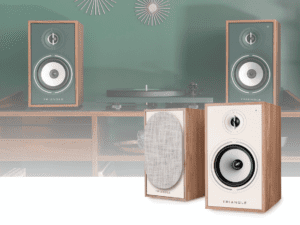
I recently overstayed my welcome at a dealer event. It was at KJ West One in the heart of London, where Jason the salesperson was busily preparing a Naim Statement versus Constellation Audio Performance demonstration (through Focal Grande Utopia EM loudspeakers). After a day or two of showing the Naim/Focal system to small groups, this was making ready for a one-on-one session with someone who was in the process of buying one of the two amplifier systems through these loudspeakers. The prospective buyer had a more rock-oriented library than befitted the first sessions, and this necessitated adjustments to the positioning of the loudspeakers in the room.
As the fine-tuning session carried on late into the night, it occurred to me that Jason and I used the same piece of music for the same task. I then realised that many people use the same piece of music for balancing bass with midrange in a room. That piece of music was ‘Just A Little Lovin’’ by Shelby Lynne, from the album of the same name. This Grammy winning album of Dusty Springfield covers from 2008 is a popular choice among audiophiles, to highlight how good a system can sound. However, the fact so many of us have this disc in our arsenal of musical tools used to set-up a system made me think of a potential series of online articles. I’m going to walk you through how I use this piece of music, either to help establish the ideal location for the loudspeakers in a room, or to evaluate those loudspeakers.
Here’s how it works. Play the opening bars (before she starts singing), and listen to how the drum kit and the Fender Rhodes interplay. That phasey Rhodes means too much drum kit sound can cause it to be less clearly defined and blur into the mix. However, too little drum kit sound and the Rhodes moves front and centre, exaggerating its performance. Perhaps most importantly, this is a subtle interplay that responds well to the loudspeakers position with respect to the rear and side walls, and their relative position to the listening position. It’s also rare in that this change does not have a strong first-reflection component, and is also a good arbiter of just how powerful the effect of bass trapping is on the overall sound quality.
This is something that demands time, care, and a lot of to-and-fro movement. Typically, the process begins with the loudspeakers and listening position in their mathematically best-guess positions in the room, and the fine-tuning can be marked out on a floor grid. It’s best to change one plane at a time, too; so change the distance between loudspeakers back and forth, then adjust the position relative to the rear wall for both speakers, then toe-in, and listener position. Then repeat, and repeat, and repeat until everything snaps into focus. And it really does snap into focus. With time and skill, you can speed this process along, but the first time you try this, you might be devoting a day or two to the task of getting things exactly right. But when you are happy there’s no more adjustment worth making, stop. It’s best to call upon friends and family for validation, just to make sure you haven’t spent days going off on a tangent and have wrecked the sound in the process, but in most cases this isn’t how it works.
The good news is this can save you money. Careful, precise position of the loudspeakers using a well-known set of recordings as ‘test discs’ (and no, Shelby Lynne is not the only disc used, but serves as good introduction to this subject) can bring out the best in any system. It also applies to more than just Shelby Lynne recordings; the relatively simplistic drum-kit-and-Fender-Rhodes introduction allows the listener to focus on the key elements of lower-mid and bass interaction, and that interaction applies to anything from Mahler to Motorhead. The bad news is the frequency you may need to do this; systemic changes can sometimes necessitate small changes to the positioning of the speakers for their optimum performance. And, it’s easy to get carried away with this; if you are thinking of the loudspeakers position in terms of millimetres, there are bigger fish to fry.
There’s one last potential bit of bad news, if you happen to like Shelby Lynne. Do this a few times and it strips any significant musical enjoyment factor from the track. This is no great shakes if the only reason to own a Shelby Lynne album is to use it for evaluation or installation purposes, but if you plan to kick back and listen to the album for pleasure, it may rob you of some of that pleasure.
The crucial part is to take from this is you can use this track (or indeed, any specific track) in one of three ways; to tune, to evaluate, and to showcase. What you can’t do with this or any track is use it for all three. It’s very difficult to use a track to set-up and tune a system, and to evaluate its performance, because you have used it to help create that performance. This seems to be an either/or issue, although it’s perfectly possible to use a track in one setting to evaluate one kind of product and to use it to set-up a system in another.
Now, here’s the interactive part. First, feel free to share your own personal set-up discs and tips here. But perhaps as importantly, is this something that’s worth forming into a series of recordings used, and why they are useful?
Tags: FEATURED
By Alan Sircom
More articles from this authorRead Next From Blog
See all
Audio Show Deluxe 2024: A photo show report
- Mar 28, 2024

Paul Messenger 1949-2024: A personal tribute
- Mar 26, 2024

Bristol Hi-Fi Show 2024: See You There!
- Feb 21, 2024

Triangle Borea Connect
- Feb 19, 2024










